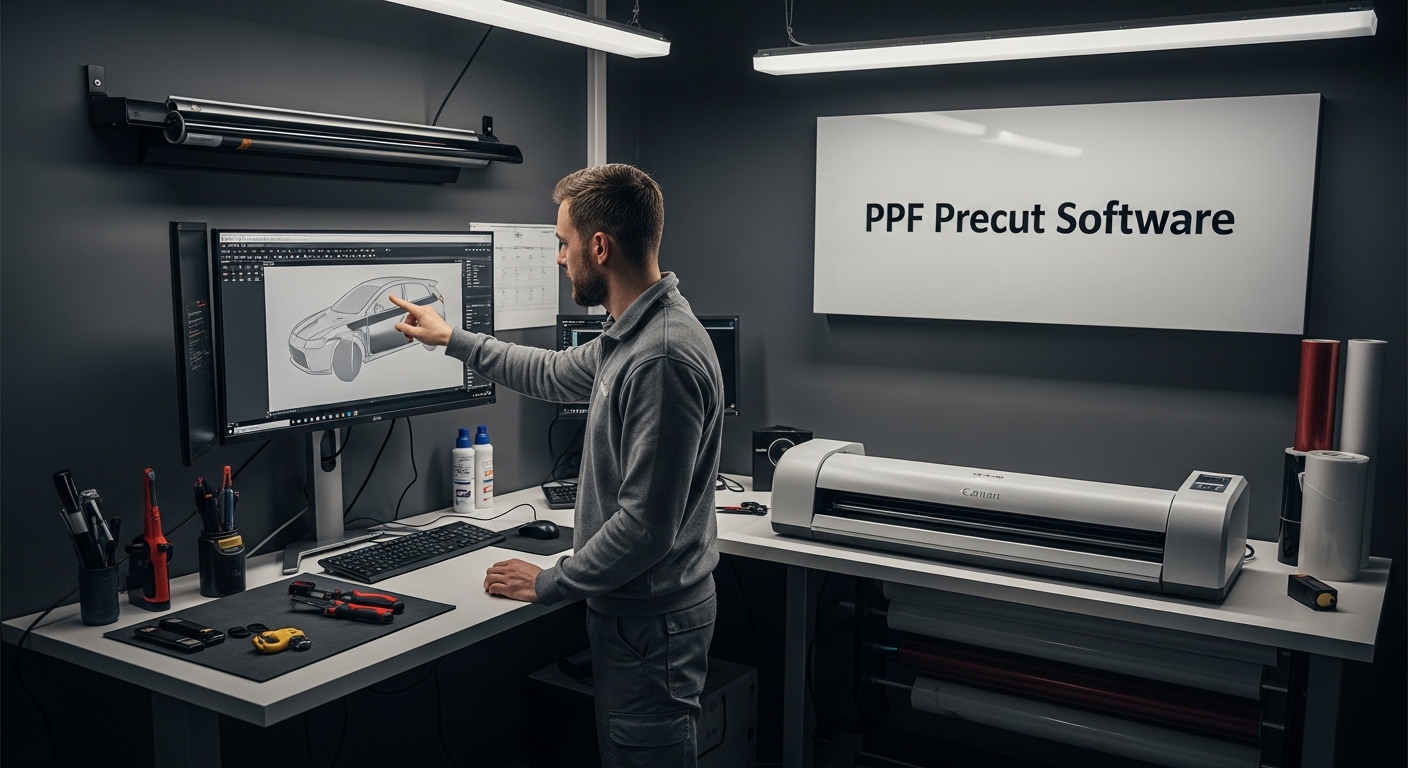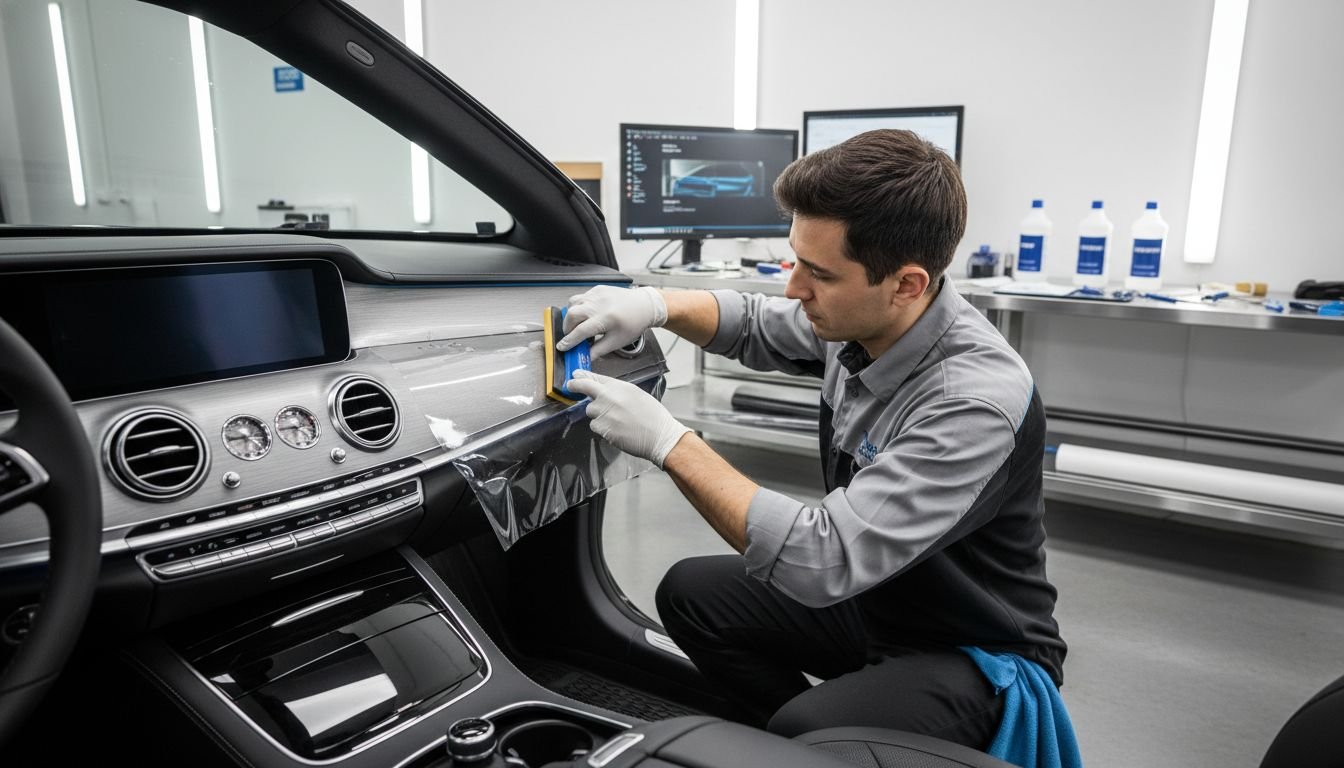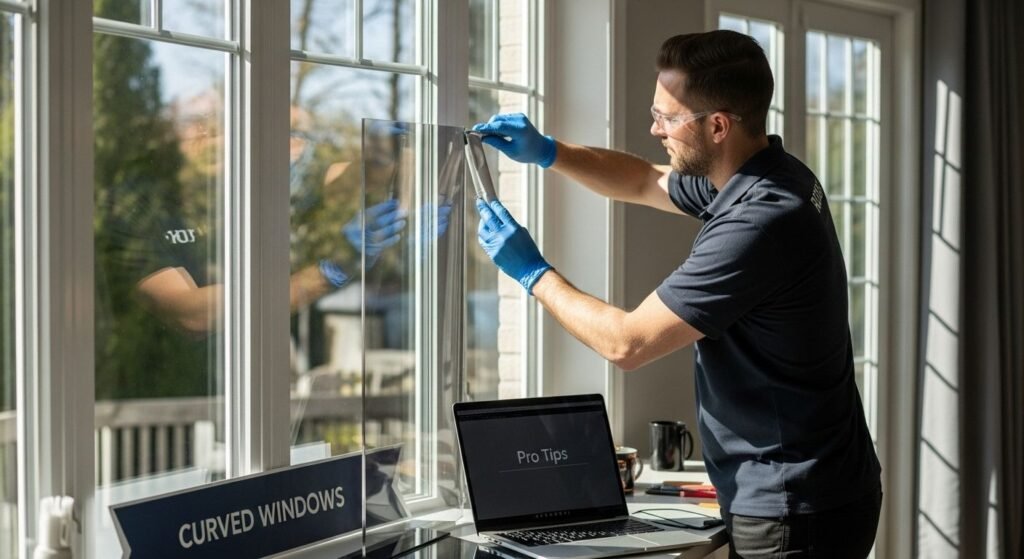
Tinting curved windows looks like a test of patience and skill for any installer. Some specialists spend hours perfecting a single installation, and even then, a minor measurement error can ruin an entire sheet of film. What few people realise is that with the right combination of tech, method, and materials, curved window tinting becomes less of a gamble and more of a repeatable craft. The biggest surprises—and the best results—often come from techniques that most DIY guides completely ignore.
Table of Contents
- Common Challenges When Tinting Curved Windows
- Essential Tools and Materials for Perfect Curves
- Step-by-Step Guide: Tinting Curved Windows
- Avoiding Mistakes and Ensuring Long-Lasting Results
Quick Summary
| Takeaway | Explanation |
|---|---|
| Understand geometric challenges of curved windows | Curved windows require advanced measurement techniques due to their complex shapes, making precision crucial for quality applications. |
| Use specialized tools and materials | Employ cutting-edge tools like digital laser measurers and flexible tint films for effective installation on non-flat surfaces. |
| Follow a systematic tinting process | A structured approach, including detailed preparation, precise cutting, and careful heat application, ensures flawless tint application. |
| Prioritize material compatibility | Selecting the right films prevents thermal stress and enhances longevity, ensuring aesthetic and functional performance. |
| Educate clients on maintenance | Providing cleaning protocols and inspection advice helps maintain the appearance and performance of tinted windows over time. |
Common Challenges When Tinting Curved Windows
Tinting curved windows presents unique technical challenges that demand precision, expertise, and specialised techniques. Professional installers face complex geometric requirements and material limitations that significantly impact the quality and durability of window tinting applications.
Geometric Complexity and Surface Measurement
Curved windows introduce intricate geometric challenges that make standard tinting approaches ineffective. Advanced tint application techniques become essential when dealing with non-flat surfaces. Transparent materials inherently complicate geometric measurements due to their reflective properties. According to glass manufacturing research, technicians often must apply thin powder layers to accurately measure surface geometry, with final accuracy directly dependent on powder thickness and distribution.
The measurement process requires meticulous attention to detail. Slight variations in curvature can lead to imperfect tint applications, resulting in bubbling, creasing, or premature film separation. Professional installers must develop advanced skills to map and adapt to each unique curved surface.
Material Adaptation and Thermal Challenges
Window tint films are traditionally designed for flat surfaces, making curved windows particularly challenging. According to global glass manufacturing insights, custom molds become crucial for each panel, dramatically increasing production complexity and costs.
Thermal expansion and contraction present significant obstacles. Curved surfaces experience more stress during temperature changes, requiring tint films with exceptional flexibility and adhesion properties. Installers must carefully select materials that can withstand dimensional changes without compromising aesthetic quality or functional integrity.
Precision Installation Techniques
Successful curved window tinting demands far more than standard application methods. Professionals must employ specialised heat shrinking techniques, carefully controlling temperature and pressure to ensure smooth, wrinkle-free coverage. The margin for error is minimal, with even slight miscalculations potentially ruining an entire tint installation.
Multi-piece glass structures with film layers require extraordinary precision. Research on curved insulating glass highlights the complexity of maintaining consistent curvature and minimising potential defects during processing.
Professional installers invest significant time in training and developing muscle memory for these intricate techniques. Each curved window represents a unique challenge, demanding adaptability, technical knowledge, and refined manual skills.
Navigating these challenges requires a combination of advanced technological understanding, material science knowledge, and hands-on expertise. Only through continuous learning and practice can installers master the art of tinting curved windows with consistent, high-quality results.
Essential Tools and Materials for Perfect Curves
Professional window tint installers require a specialised arsenal of tools and materials to successfully navigate the complexities of curved window surfaces. The right equipment transforms challenging installations into precise, high-quality results.
Advanced Measurement and Preparation Tools
Accurate measurement represents the foundational step in curved window tinting. Precision cutting software becomes critical for mapping intricate surface geometries. According to Lawrence Berkeley National Laboratory, understanding material properties starts with precise measurement techniques.
Key measurement tools include:
- Digital Laser Measurers: Providing millimetre-level accuracy for capturing complex curved surfaces
- 3D Surface Scanners: Creating comprehensive digital templates of window geometries
- Infrared Temperature Guns: Monitoring surface temperatures during application
Professional installers invest in high-precision instruments that capture nuanced surface variations, ensuring a perfect tint application from initial measurement through final installation.
Specialised Tinting Films and Adhesive Technologies
Curved window tinting demands advanced film technologies designed for flexibility and durability. According to the Whole Building Design Guide, material selection significantly impacts long-term performance.
Critical film characteristics include:
- High Elongation Percentage: Enabling film to stretch without compromising structural integrity
- Temperature-Adaptive Adhesives: Maintaining consistent bonding across varying surface temperatures
- Multi-Layer Composition: Providing enhanced durability and performance
Modern tinting films incorporate sophisticated polymer technologies that allow unprecedented adaptability to complex curved surfaces. Manufacturers continuously develop materials specifically engineered to overcome traditional installation challenges.
Professional Heat Application and Finishing Equipment
Successful curved window tinting relies on precise heat management and application techniques. Specialised heat guns, designed with variable temperature controls and focused airflow, enable installers to manipulate films with surgical precision.
Essential heat application tools include:
- Professional-Grade Heat Guns: Offering precise temperature and airflow control
- Silicone Edge Squeegees: Facilitating smooth film application without surface damage
- Ceramic Cutting Blades: Providing clean, precise cuts on complex curved surfaces
The combination of advanced tools, materials, and technical expertise transforms window tinting from a challenging task to a refined craft. Professional installers understand that success depends not just on skill, but on investing in cutting-edge technologies that enable exceptional results.
Navigation of curved window tinting requires continuous learning, technological adaptation, and a commitment to mastering increasingly sophisticated tools and techniques.
To help readers differentiate the main equipment and materials required, the following summary table lists the essential tools and materials used in curved window tinting, grouped by their application stage.
| Stage | Tool / Material | Purpose |
|---|---|---|
| Measurement & Preparation | Digital Laser Measurer | High-precision measurement of curves |
| Measurement & Preparation | 3D Surface Scanner | Generating digital templates |
| Measurement & Preparation | Infrared Temperature Gun | Monitoring surface temperature |
| Film Selection & Preparation | Flexible Tinting Film | Adapting to complex curved surfaces |
| Film Selection & Preparation | Temperature-Adaptive Adhesive | Ensuring stable bonding |
| Film Selection & Preparation | Multi-Layer Polymer Film | Enhanced durability and performance |
| Application & Finishing | Professional-Grade Heat Gun | Controlled film shrinking |
| Application & Finishing | Silicone Edge Squeegee | Smooth, bubble-free application |
| Application & Finishing | Ceramic Cutting Blade | Clean and precise film trimming |
Step-by-Step Guide: Tinting Curved Windows
Tinting curved windows requires a methodical approach that combines precision, technical skill, and specialized techniques. Professional installers must follow a carefully choreographed process to achieve flawless results on challenging curved surfaces.
Preparation and Surface Assessment
Before beginning the tinting process, comprehensive preparation is crucial. Precision cutting techniques play a critical role in successful application. According to the Whole Building Design Guide, proper surface preparation determines the long-term performance of window tints.
Key preparation steps include:
- Thorough Cleaning: Complete removal of all dirt, dust, and contaminants using specialized cleaning solutions
- Surface Inspection: Detailed examination of the curved surface for imperfections or structural variations
- Temperature Control: Ensuring the workspace and surface are at optimal temperature for film application
Professional installers meticulously clean and inspect the curved surface, creating an ideal environment for tint application. This initial stage is critical for preventing future complications and ensuring optimal film adhesion.
Film Cutting and Initial Positioning
Cutting and positioning film on curved surfaces demands extraordinary precision. Japanese window film application research reveals advanced techniques for conforming film to complex glass geometries. Installers must create precise pre-cuts that account for the specific curvature of each window.
Critical cutting and positioning techniques involve:
- Digital Templating: Using 3D scanning technology to create exact surface maps
- Strategic Pre-Cutting: Developing initial film cuts that allow for controlled stretching
- Gradual Positioning: Carefully aligning the film with minimal initial contact
The initial positioning requires a delicate touch, with installers using specialized tools to manage film tension and prevent premature adhesion. Each movement must be calculated and precise.
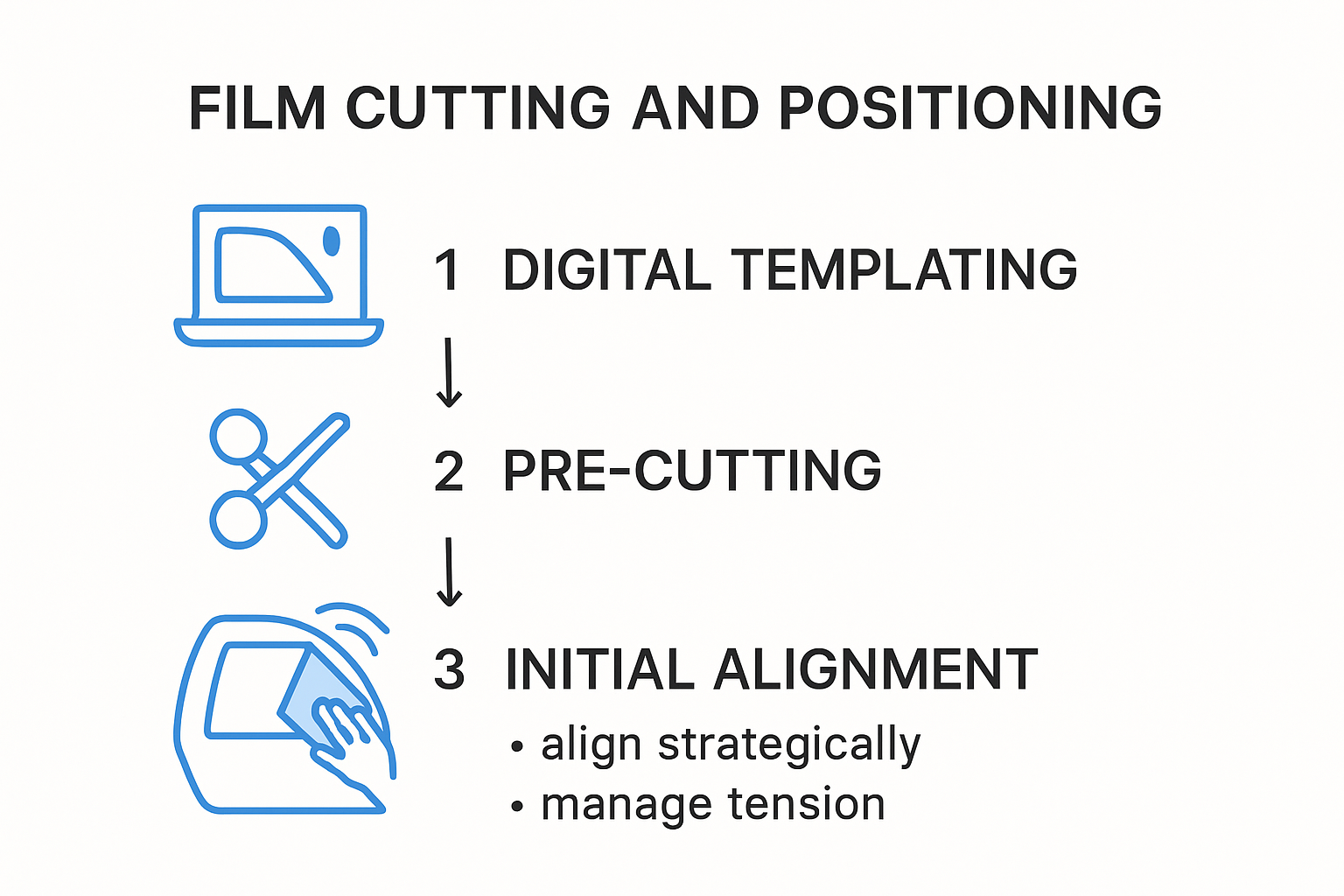
Heat Application and Final Finishing
Heat application represents the most critical phase of curved window tinting. Installers must carefully manage temperature and pressure to ensure smooth, wrinkle-free coverage. According to Penn State’s window technology research, precise heat management is crucial for achieving optimal film adhesion.
Final application steps include:
- Controlled Heat Shrinking: Using specialized heat guns to carefully conform film to curved surfaces
- Systematic Squeegee Technique: Removing air bubbles and ensuring complete adhesion
- Edge Trimming: Precise cutting to create a seamless, professional finish
Professional installers develop an almost intuitive understanding of how heat and pressure interact with different film types and curved surfaces. The final moments of application require exceptional skill and patience.
Successful curved window tinting is an art form that combines technical knowledge, specialized equipment, and refined manual skills. Each installation presents unique challenges, demanding continuous learning and adaptability from professional installers.
The following table visually summarises the entire curved window tinting process covered above, outlining each step, its purpose, and key considerations for a flawless professional result.
| Step | Purpose | Key Considerations |
|---|---|---|
| Thorough Cleaning | Remove contaminants for optimal adhesion | Use specialised solutions and microfibre cloths |
| Surface Inspection | Identify imperfections or structural issues | Address flaws before film application |
| Temperature Control | Ensure suitable application conditions | Maintain optimal ambient and surface temperature |
| Digital Templating | Create accurate template for cutting | Use 3D scanning or digital measurement tools |
| Strategic Pre-Cutting | Enable controlled stretching over curve | Account for curvature and installer’s margin |
| Gradual Film Positioning | Prevent premature adhesion or bubbles | Apply film gently, adjust position as needed |
| Controlled Heat Shrinking | Form film precisely to curved glass | Use heat gun with variable temperature control |
| Systematic Squeegee Technique | Eliminate air bubbles, ensure full contact | Use silicone squeegee, work from centre outward |
| Edge Trimming | Create a seamless and professional look | Use ceramic blade for precise finishing |
Avoiding Mistakes and Ensuring Long-Lasting Results
Successful window tinting goes beyond initial application, requiring strategic planning and meticulous execution to guarantee durability, performance, and aesthetic quality. Professional installers must navigate complex technical challenges to deliver exceptional, long-lasting results.
Understanding Material Compatibility and Performance
Precision cutting software plays a crucial role in preventing common installation errors. According to the Whole Building Design Guide, improper tint specification can dramatically impact window performance, potentially causing unintended thermal and aesthetic consequences.
Key compatibility considerations include:
- Film-Glass Interaction: Ensuring selected films do not cause thermal stress or damage to window surfaces
- Temperature Tolerance: Choosing materials capable of withstanding extreme environmental conditions
- Adhesive Stability: Selecting films with long-term adhesive properties matching specific curved surface characteristics
Professional installers must comprehensively understand material science, recognizing how different films interact with various glass types and environmental conditions.
Energy Efficiency and Performance Optimization
Window tinting represents more than an aesthetic enhancement. U.S. Department of Energy research indicates that strategic window treatments can reduce heating energy loss by up to 30% and manage solar heat gain effectively.
Performance optimization strategies include:
- Solar Heat Gain Management: Selecting spectrally selective coatings to reduce unwanted heat transmission
- Thermal Insulation: Choosing films that provide additional temperature regulation
- UV Protection: Implementing materials that block harmful ultraviolet radiation
Intelligent film selection transforms window tinting from a cosmetic treatment into a sophisticated energy management solution.
Maintenance and Long-Term Care
Ensuring lasting performance requires ongoing maintenance and proactive care. Professional installers must educate clients about proper cleaning techniques and potential performance limitations.
Essential maintenance recommendations include:
- Gentle Cleaning Protocols: Using soft microfibre cloths and specialized cleaning solutions
- Regular Inspection: Checking for early signs of film degradation or adhesive separation
- Environmental Considerations: Understanding how local climate impacts film longevity
Maintaining tinted curved windows demands a comprehensive approach that balances technical knowledge with practical care strategies.
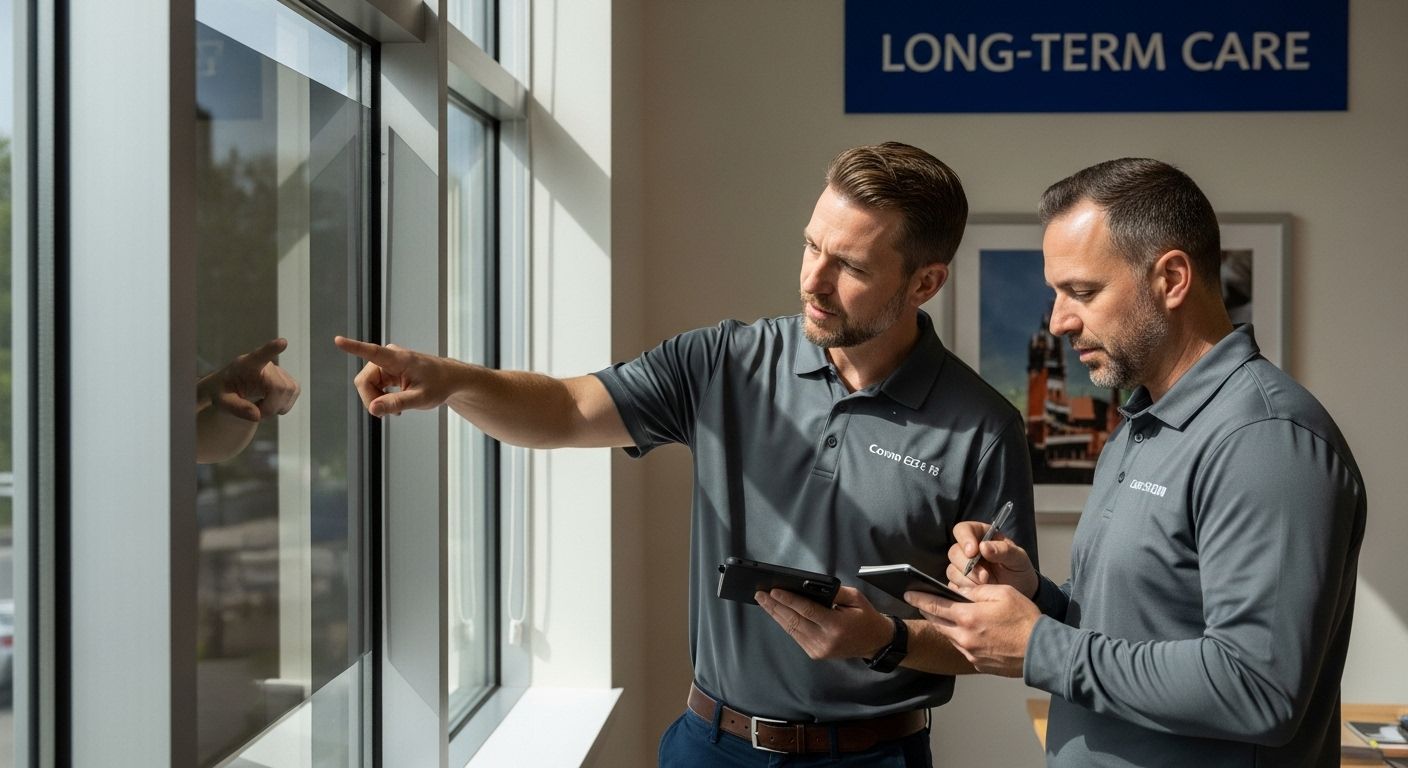
Successful window tinting represents a delicate balance between material science, installation expertise, and ongoing maintenance. Professionals who master these elements can deliver exceptional results that combine aesthetic appeal with functional performance.
Continuous learning, technological adaptation, and a commitment to understanding emerging materials and techniques remain crucial for delivering superior window tinting solutions in an evolving industry.
Frequently Asked Questions
What are the main challenges of tinting curved windows?
Tinting curved windows presents challenges such as complex geometric measurements, material limitations, and the need for precise installation techniques to achieve a high-quality finish.
What tools are essential for successfully tinting curved windows?
Essential tools include digital laser measurers, 3D surface scanners, flexible tint films, professional-grade heat guns, and silicone edge squeegees to ensure precision and durability in installation.
How can I ensure a flawless installation of window tint on curved surfaces?
To ensure flawless installation, follow a systematic approach: thoroughly clean and inspect the surface, accurately measure and cut the film, and carefully apply heat for smooth adhesion while avoiding air bubbles.
What maintenance is required for tinted curved windows?
Maintenance involves gently cleaning with soft microfibre cloths and appropriate cleaning solutions, regularly inspecting for signs of degradation, and understanding how environmental factors may affect film longevity.
Transform Your Curved Window Tinting Results with Precision Software
Struggling to achieve flawless finishes on curved windows? You are not alone. Many installers face complex geometry issues and battle bubbles, creases or wasted film, as highlighted in our article on pro tips for tinting curved glass. The demand for exact patterns, adaptable films and accurate cuts is higher than ever. If efficiency, reduced material waste and a professional edge matter to your business or garage, it is time to upgrade your approach with smart tools made for advanced automotive customisation.
Experience the full range of window tint solutions

Join installers and enthusiasts using AEONCUT’s leading-edge software. Access thousands of precise pre-cut patterns, benefit from AI-powered auto-nesting and eliminate the guesswork on every curve. Do not let another job fall short of perfection. Start streamlining your installations and boost confidence in every result—visit https://aeoncutsw.com and secure your competitive advantage today.
Recommended
- What is Window Tint? Essential Guide for Tinting Pros 2025 – AEONCUT PPF Pre-cut Cutting software
- How Window Tint Works: Essential Guide for Auto Professionals 2025 – AEONCUT PPF Pre-cut Cutting software
- 2025 Guide to Window Tint Colour Options for Industry Pros – AEONCUT PPF Pre-cut Cutting software
- Types of Window Tint: Guide for Installers and Dealers 2025 – AEONCUT PPF Pre-cut Cutting software
- The Key to Controlling Color on Flexible Film – kolorguide


